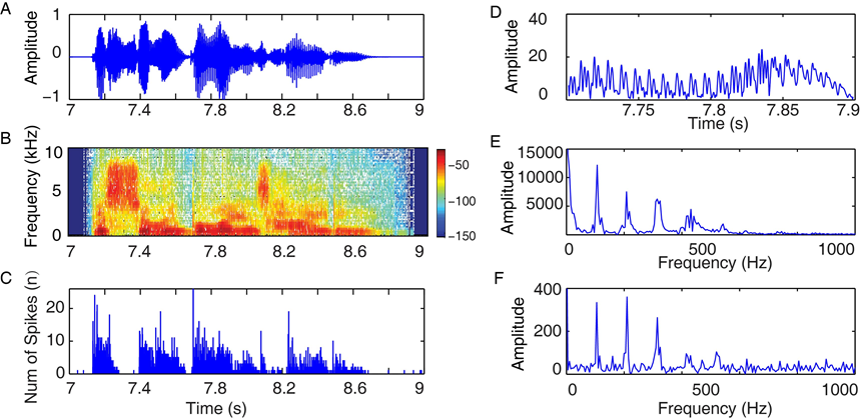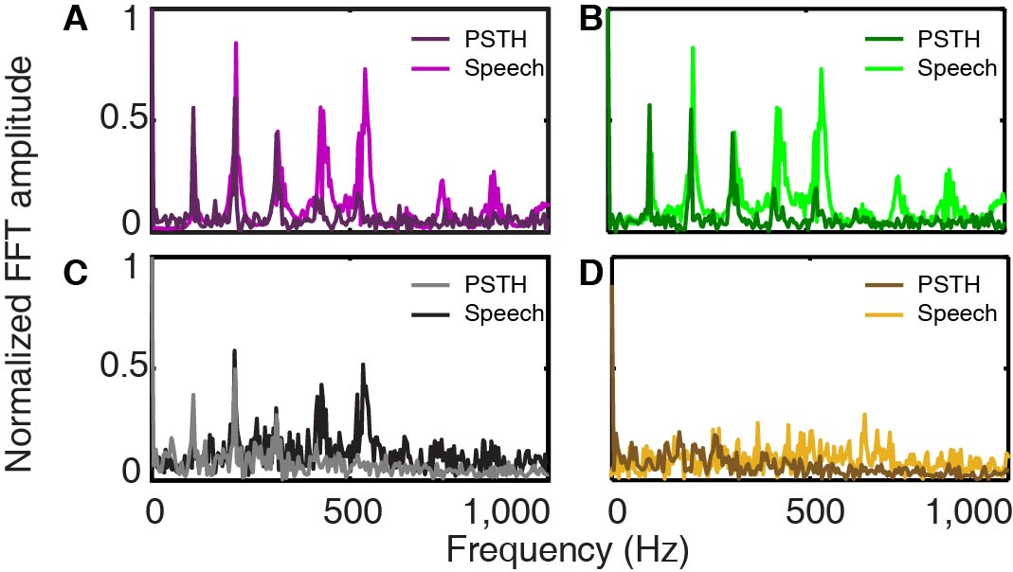Presenting Author:
Principal Investigator:
Department:
Otolaryngology - Head and Neck Surgery
Keywords:
Auditory neurons, Phase locking, Temporal processing, Speech
Location:
Third Floor, Feinberg Pavilion, Northwestern Memorial Hospital
B128 - Basic Science
Phase Processing of Complex Sounds in the Auditory System
Background: The auditory system processes everyday speech like a mechanical Fourier transform: different frequencies are spatially mapped along the hearing organs. Within each frequency bands, auditory neurons have been found sensitive to two features: a slowly varying temporal envelope (TE) and a rapidly varying temporal fine structure (TFS). It has been suggested that speech recognition is well sustained by TE in quite, but TFS plays an important role for pitch and music perception, and speech perception under demanding environments. TFS is retained throughout the auditory pathway by the timing of neural discharges, i.e. phase locking. Our study examined the TFS coding in response to natural speech sentences. Method: Guinea pigs with normal hearing were tested. The inferior colliculus of guinea pigs was surgically accessed and a 16-channel electrode was used for single unit recordings. Acoustic stimuli were natural speech sentences, and sentences with various extent of TFS distortion. Neural activity was recorded from well-defined single units. In some circumstances, more than one unit were captured simultaneously with the 16-channel electrode. A Fourier transformation of the post-stimulus time histogram (PSTH) was performed to examine the phase locking patterns. Acoustic signals were processed through short-time Fourier transform to extract the TFS patterns. The phase locking and the TFS patterns were then compared. Results: Spectra of neural PSTH evoked by natural speech sentences showed dominating frequency peaks for distinct low frequencies. These frequency peaks match the representative frequencies in the TFS of the acoustic stimuli. For speech sentences with distorted TFS, dominating frequency peaks were deteriorated in the corresponding PSTH spectra. Furthermore, the phase locking patterns were compared across multiple neurons with different best frequencies recorded simultaneously. When the PSTH from two neurons were summed, spectral analysis of the combined PSTH still revealed dominating frequency peaks that were comparable to the summation of each individual PSTH spectra. This indicates the timing of neural firing were aligned. Conclusion: Our data showed that phase locking patterns to speech sentences were evoked mainly by the primary frequency components in the TFS. Phase locking patterns were deteriorated with TFS distortion. Neurons with different best frequencies showed alignment in the timing of discharges. The neural coding of TFS in speech will facilitate our understanding in complex sound processing. It might also provide guidelines to incorporate TFS in the TE-based coding strategy of contemporary cochlear implants. Funded with federal funds from the NIDCD, R01 DC011855


